Restaurant Management

The restaurant industry has a reputation for being volatile. Running a restaurant isn’t as simple as loving food and preparing it for people. It’s vital to have a deep understanding of how the restaurant business works and how to optimize operations to support your goals.
According to IBISWorld, the U.S. single-location, full-service restaurant industry expanded at a compounded annual growth rate of 3.2 percent for the period of 2014 through 2019.
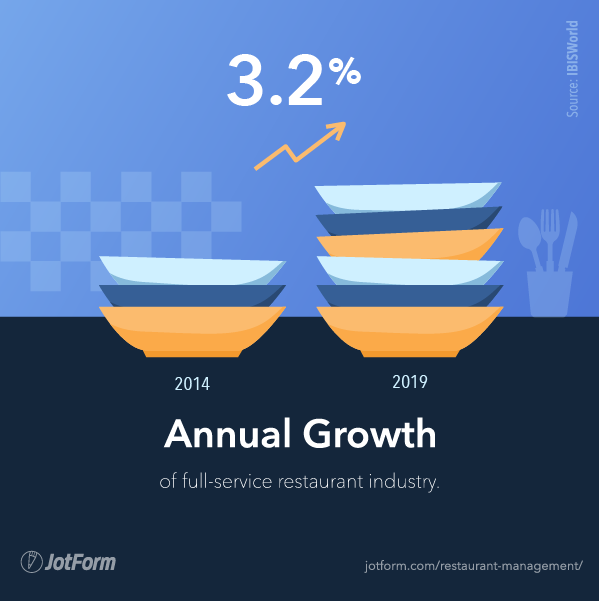
That isn’t the only segment with growth potential. People eat out often. They’re looking for more healthy, alternative dining options when they go to a restaurant and embracing takeout and similar styles of purchasing from restaurants.
New digital apps and services as well as widespread access to data are leading to the creation of new business models. In short, the restaurant industry is going through a digital transformation.
While the potential is real, achieving and sustaining growth isn’t simple. Managing a restaurant is complex and challenging. You need to consider
- How to create a menu that fits your market
- How to create a positive customer experience
- What you need to do to stay on top of inventory management best practices and avoid unnecessary waste
- How you can improve and optimize restaurant operations
- What methods you should use to manage staff effectively
Digital solutions can make it easier to deal with these issues, empowering you to improve restaurant management and create more value from your establishment. Read on to learn the ins and outs of what goes into managing a restaurant in today’s digitally empowered world.
How to create a menu
What kind of restaurant do you want to be?
Creating a menu is impossible if you don’t know your goals and intent for the restaurant. Do you want to be a place where families can spend a fun night together? Are you looking to create a cozy, intimate place that’s perfect for date nights? Do you want your restaurant to be the center of the party for adults who are out on the town with friends?
These general vibe questions can give you a guidepost to start from. Even if, deep down, you really just want to be about great food, you’ll need something that distinguishes your restaurant from the competition. What’s the first impression you want people who drive by to get? What demographics are you trying to attract?
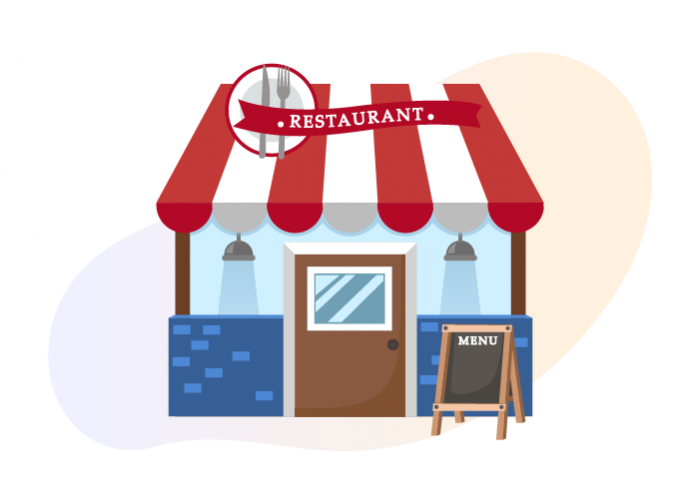
Answering these questions is critical to creating your menu. Ultimately, the menu sets the character and feel of your restaurant. If your marketing efforts, decor, and service strategies don’t align with your menu, patrons will feel that disconnect. If your menu isn’t thoughtful and well aligned with what you want your restaurant to be, you may find it difficult to gain traction.
Essentially, a customer should be able to tell what they can expect from your restaurant by reading your menu. If you’ve clearly defined the kind of establishment you want to be, then you’ll be better able to narrow down the options you have when setting up a menu.
What does your local market tell you about the menu?
You can’t escape your marketplace. While some restaurants may get by with business from tourists visiting from out of town, most depend on the locals who regularly patronize the establishment. Creating a menu without performing market research sets you up for problems down the line. Here’s some of the research you should perform:
- Industry trends. The restaurant industry is always changing. Digital technologies and widespread access to apps and services impact today’s market. isn’t just by but also by the shockwaves created by. Customers can order via app, pay digitally, and get an alert when their meal is ready. They can use third-party apps and services to get meals delivered. Preprepared and to-go meals are gaining steam. However, traditional restaurants are also popular for a variety of reasons. Staying on top of industry trends can guide your strategies and help you better understand customer needs before you dive into the details of your market.
- Local demographics. Opening a high-end gastropub in a low-income neighborhood won’t set you up for success. Reach out to your Chamber of Commerce and similar institutions to gain a stronger awareness of your market. This knowledge can help you identify the pricing and product range that makes sense when you’re creating a menu.
- Competitive dynamics. If you want to open a Mexican restaurant in a neighborhood with two other Mexican restaurants, what’s going to make yours unique? You may learn that the type of restaurant you want to create is a good fit but that your expectations for the price points you plan to pursue would put you in a difficult competitive place. That knowledge can help you refine your ideas and get a clearer picture of what you need to do to stand out in the marketplace.
- Food availability. While you can pretty much get any type of food from any location, certain markets provide easier access to certain items. This isn’t just about getting seafood more cheaply when you’re near the ocean. Research seasonal planting trends. Reach out to local farmers. Understand what’s grown in your area and when; learn how to calculate food cost, look for opportunities to source local goods in an affordable, sustainable way that creates value for your restaurant.
You can’t simply research your way to a good restaurant. However, some strategic market research — much of which you can complete online or with some networking in your local communities — can elevate your business and make restaurant menu planning much easier.
What kind of culinary team are you building?
The skills of your chef, line cooks, and other culinary team members will, of course, have a huge influence on the kind of menu you can create. If you’re trying to function as a chef/owner, you probably know what type of food you’re passionate about. At that point, the question is finding line cooks you can rely on and figuring out the best way to fit your passions into your market situation.
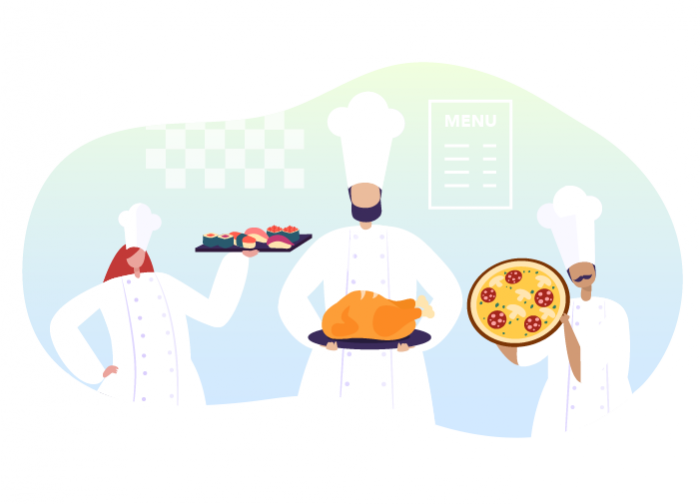
If you’ve partnered with a chef, you’ll need to develop a close working relationship with them to ensure you can share ideas and respect one another. Feuds between an owner and chef are never good for the business. Make sure you have a vision of what you’re looking for in terms of culinary staff. Build a relationship with your staff that gives them freedom to use their expertise while giving you the ability to ensure the menu aligns with the business’s needs. In practice, this often means
- Creating a degree of financial transparency so your culinary staff leaders can understand how their menu choices and methods influence profitability
- Holding regular meetings to create open conversations about menu options and give team members input
- Setting big-picture guidelines that serve as a point of reference for the type of menu you can support and give staff a larger context to work within
Getting your staff on board with your menu — and keeping them engaged through ongoing conversations — is key to not only creating a menu in the first place, but also to answering the question of how to create a restaurant menu that stays relevant over time. No menu is static, and a strong working relationship with your culinary staff puts you in a good position to keep your menu fresh and effective over time.
Day-to-day menu considerations
A menu is often a living document. Restaurant menu planning isn’t something you do once. The best restaurants regularly update their offerings based on culinary skills, seasonal food availability, and shifts in consumer demands. As you go through the process of creating your menu and managing it over time, a few issues stand out. Staying on top of these practices can help you get the most from your menu.
Revisit planning regularly
Your initial menu planning process is a matter of blending your restaurant’s identity with market demands and culinary team skills. You’ll hopefully come away with an effective blend of items to fill out your menu and position your restaurant for success.
That initial menu may be fantastic, but that doesn’t mean you should keep it the same for years at a time. Besides identifying opportunities for specials, you’ll also want to consider seasonal changes to the menu and revisit core menu items periodically.
Hold regular staff meetings to review what’s working and what isn’t. Perhaps an item is selling well but not really contributing to profits due to a pricing problem. Maybe an item is great on paper but is proving problematic in the kitchen and is more trouble than it’s worth.
Understanding these issues can help you not only create a good menu by anticipating problems but also help you to refine your menu over time. Regular menu planning meetings can help you take advantage of these opportunities.
Analyze customer feedback
In some ways, restaurant menu planning is easier in light of the digital technologies available today. Think back just a decade or so. How did restaurants get feedback from customers? Would you give them paper-based surveys on their way out of the restaurant and try to log those responses? Most likely, your customer analysis depended on observed trends — such as compliments at the table or feedback to waitstaff — and reviews on sites like Yelp, where the results are often skewed toward the negative.
Digital tools enable you to capture feedback more easily. Mobile apps let you create quick, easy surveys where users can rate your products and service in just a few seconds. The apps automatically log the data so you can create reports. You can also use technology to track sales and inventory more easily — something we’ll talk more about later on — so you can better understand what’s actually being purchased.
You may be able to engage with customers on social media and through similar channels to build relationships and get feedback.
This digital input from customers can be a game changer. Imagine you have a menu item that isn’t selling well. You don’t hear much from customers, but your kitchen team loves it. What do you do? In the past, you had to experiment. Maybe offer a special or promotion to sell more of that item and get customers excited. However, that would only be a short-term fix. It may increase sales but doesn’t help you identify the problem with the menu item. With digital technologies, you can engage users while giving them a promotional benefit. And you’ll get feedback on how to improve the item — maybe it seems too expensive or the portion size is too small.
Digital tools let you gather more empirical data about customer preferences, making it easier to adjust your menu based on more than observed feedback and raw sales data.
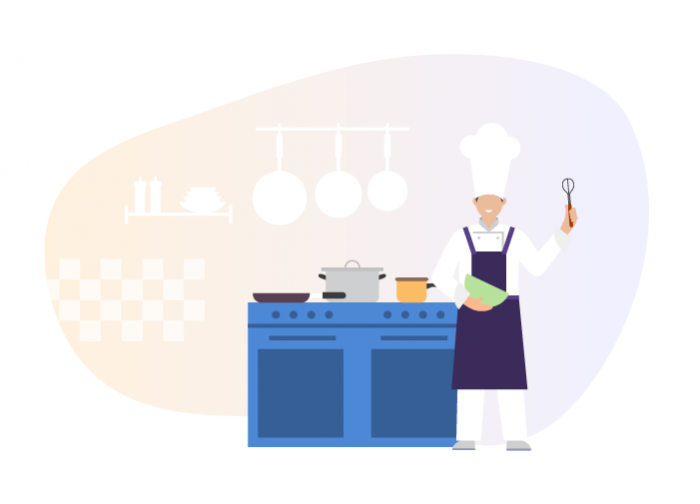
Experiment when you can
Don’t be afraid to use specials or short-term deals as a way to experiment with new items. It can be challenging to predict how customers will respond to a dish until it’s been on the market for a while. One alternative to wholesale menu changes every few years is periodic experimentation with new items. You can then keep the ones that work and replace under-performing dishes.
Restaurant menu planning requires almost constant tweaking to find the sweet spot. Of course, you don’t want to change your menu too often; frequent alterations to restaurant menu pricing or items can make it difficult for customers to get comfortable with your menu. However, strategic experimentation and occasional small changes are a great way to ease customers into new ideas and continually improve your restaurant menu.
Be careful about pricing
It goes without saying that price heavily influences consumer decision-making and expectations. If somebody splurges on an expensive menu item, they want to be blown away by some blend of quality, portion size, or excitement in the experience of eating it. At the same time, overly low prices don’t just hurt your bottom line; they can create a perception of low-quality food.
Finding the right balance is a matter of understanding the feel of your restaurant, knowing what your regular patrons can afford, and pricing in a way that allows for regular visits from customers.
Working closely with your culinary staff is critical here. Your chef will know how much different foods cost. Chefs also manage your supply chain and understand opportunities to create value through items that are affordable but of high enough quality to be profitable. When deciding on a price, it can help to understand how the kitchen prepares an item and how your waitstaff gets the food to customers. As you go through this process, you may learn that some menu items are too wasteful to justify or that others put too much strain on your servers.
Ultimately, choosing menu prices is a matter of blending food quality, cost, portion size, and serving experience along with what customers are willing to pay in order to find a sweet spot that creates profitability.
Design with care
Trends in menu design are highly variable, with different practices coming into and out of fashion all the time. While you certainly don’t need to constantly chase after each trend, you do need a menu that’s crafted to create a positive customer experience. Below are some best practices to follow, regardless of what trends are hot at the moment:
- Use your menu to reinforce the theme and atmosphere of your establishment. It’s a great opportunity to create a positive impression that gets visitors into the experience.
- Choose every part of your menu with intention. If you don’t have a strong reason for adding something, don’t include it.
- Avoid clutter. Blank space gives the eyes a place to rest and makes it easier for those viewing a menu to follow the flow of important information. You want the design to put the visitor’s focus on the food, rather than overwhelming them.
- Focus on quality. Printing at a high-quality print shop is expensive. The quality of photos and other design elements can vary depending on the printer you use, the lighting in the space, and the type of paper you use. You may not be able to create your dream menu because of the high costs of printing. However, that doesn’t mean you should just go cheap. This is where the advice about intentional design comes into play. Choose paper, fonts, design elements, etc., in a way that reinforces your brand and creates value, focusing more on the level of quality you can reasonably execute over being able to fit in as many ideas as possible.
- Consider wear and tear. Your menus will be used frequently. They need to be able to withstand spills and other kinds of damage. Think about how you’ll handle that by designing menus that can either take punishment or are inexpensive to maintain and replace.
Creating a menu is about blending practicality, branding, and customer expectations. Avoid blindly following fads and be intentional about every menu choice you make, whether it’s the design or the food. Once you have a good menu in place, you’re ready to start thinking about backend issues like inventory management.
How to manage restaurant inventory
Big-picture best practices
Restaurant inventory management may happen in the background, but it’s also among the single most important elements of an establishment’s success. A great chef and ambiance won’t matter if you can’t source food efficiently and avoid waste. Problems in inventory management can gradually erode your profits, leaving you to miss out on cash you could use to grow your business and better position yourself for success.
There’s a great deal to think about when it comes to restaurant inventory management. But before getting into the details, we should take some time to talk about the high-level best practices that can serve as guideposts in optimizing your supply chain. Here’s a look at a few of the most important big-picture best practices and some guidance on how to live up to them.
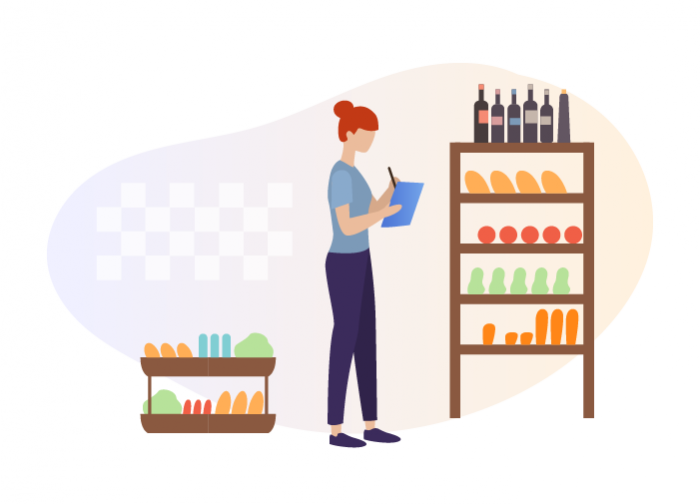
1. Waste not, want not
It’s a bit cliche, but waste is your enemy in the restaurant business. Every bit of food that’s thrown away without being served to a customer is a missed revenue opportunity. Every food item that spoils while in storage creates a potential health code violation.
Finding ways to avoid waste is essential to positioning yourself for profitability. The following are a few ways you can do this.
Improve demand forecasting
Purchasing excess restaurant inventory sets you up for waste. Historically, restaurants were forced to make fairly loose estimates on inventory needs based on observational data about sales and the expiration dates of food items in stock. It doesn’t take too much fluctuation in demand on a given night to leave you with excess food.
The digital technologies available today make it easier for restaurant managers and chefs to log and track transaction data over time. They can get into granular details such as
- The sales variance of different menu items depending on season and day of the week (perhaps affordable items sell better on weeknights, while guests splurge on the weekend)
- The popularity of food items depending on how they’re prepared — perhaps sales of your grilled chicken dishes are thriving, while fried chicken doesn’t sell well. You can use that data to create specials that move food at risk of becoming waste.
Ultimately, digital systems let you not only understand what your customers buy but what they’re likely to purchase based on historic trends. This helps you move past observational data into empirical decision-making so that you can optimize demand forecasting and reduce the need to carry excess supply that eventually becomes waste.
Optimize food storage
There’s a great deal to consider when storing food, and it’s vital that your kitchen staff understands proper food storage and management. We’ve all heard the horror stories — restaurants putting hot food into fridges, causing bacteria growth; food prep teams storing chicken or seafood in unsealed containers, leading to the spread of harmful germs; staff leaving moldy bread to rot on the back of shelves — any of these nightmares are bad enough on their own.
Food storage problems aren’t just an issue because of the isolated damage to a specific item of food. Losing 20 pounds of chicken because it was mislabeled and went bad is frustrating, but it’s the kind of mistake that sometimes happens. However, leaving that same chicken in a place where it comes into contact with raw produce means the chicken renders the produce unsafe to serve.
Proper separation, labeling, and storage of food is vital to reducing waste and eliminating the human error that forces you to dispose of food. Create a formal, standardized food storage process and work to ensure consistent staff compliance.
Get creative
Great chefs can turn less ideal cuts of meat or unpopular vegetables into attractive parts of the menu. When your kitchen staff gets creative about how they use different food items, you can maximize the value of your purchases and minimize waste.
2. Work with a bunch of vendors
Simplifying your ordering and stocking processes can be nice for your team. That said, be careful not to oversimplify. If you’re purchasing all of your food from a couple of suppliers, chances are you’re missing out on opportunities. Food costs vary substantially depending on the season, and different suppliers will have access to more affordable items at different times of the year.
Restaurant suppliers can be a great source of food items, and having a few vendors in place to choose from for different goods at different times of year can help you keep costs under control. However, turning to alternative supply options can also be an attractive option. Restaurants can consider a few options beyond typical suppliers:
- Direct partnerships with farms — through relationships with specialty farms or local farm shares — to get fresh, high-quality produce in a cost-efficient way
- Planting a garden to grow seasonal items, herbs, or ingredients you frequently use to maintain a consistent, cost-effective supply (for example, an Italian restaurant can gain a great deal by growing tomatoes — a relatively simple crop to maintain — and using them for sauces, salads, and similar items)
- Identifying and working with specialized vendors that focus on specific items to take advantage of unique opportunities, such as easier access to organic foods or rare products, such as game
Partnering with a wide range of suppliers and vendors can help you optimize your purchasing strategies and maintain your ability to supply key foods in the event of a shortage.
3. Be aggressive about maximizing efficiency
Maintaining a first-in, first-out program for your inventory is key in not just eliminating waste but also in maximizing the freshness of the items you serve. It can also be a first step in a strategy to minimize excess inventory.
If you’re minimizing waste, storing food efficiently, and leveraging modern analytics software to improve forecasting, you can then reduce the amount of inventory you need to carry in the first place.
For example, you may know through observation that you sell a lot of steak over the weekend, so you place a larger order set to arrive on Friday morning. But do you have historic data that tells you the average number of steak dishes you sell each weekend and how that figure fluctuates relative to seasonal trends? With that data, you could predict how much steak sells when a music festival is in town compared to a normal weekend in winter. On top of that, you could track sales in real time during the weekend to determine if your ordering volume is higher than normal and you need to make a rush order.
Reducing the excess inventory you carry doesn’t just help you eliminate waste. It also reduces the amount of space you use for storage and can keep energy costs down. Smaller freezers mean lower costs to keep items fresh.
These big-picture strategies, and the specific ways you execute on them, can give you a strong foundation for effective restaurant inventory management. There are also some specific tactics you can put in place to make it easier to manage your supply chain.
Streamline ordering with restaurant inventory sheets
What are inventory sheets?
A restaurant inventory sheet is a form that lists common goods a company uses as part of its everyday operations. For retail stores, this typically means items that are sold to customers. For restaurants, an inventory sheet can be used to track food items used for different parts of the menu. For example, the sheet may list a dish on the menu and the specific items and quantities needed for that dish. Alternatively, you could list the foods you use in your menu rather than itemizing goods in order to simplify ordering.
Quantifying your inventory in a custom form can make it easier to assess what you have when you do cycle counts of goods. Team members can easily record the items in stock and where they’re stored so that food doesn’t end up being forgotten and going bad.
Inventory sheets can also simplify ordering by allowing team members to easily track what you have and what you need. They can then submit the sheet to the person who has purchasing authority to complete orders.
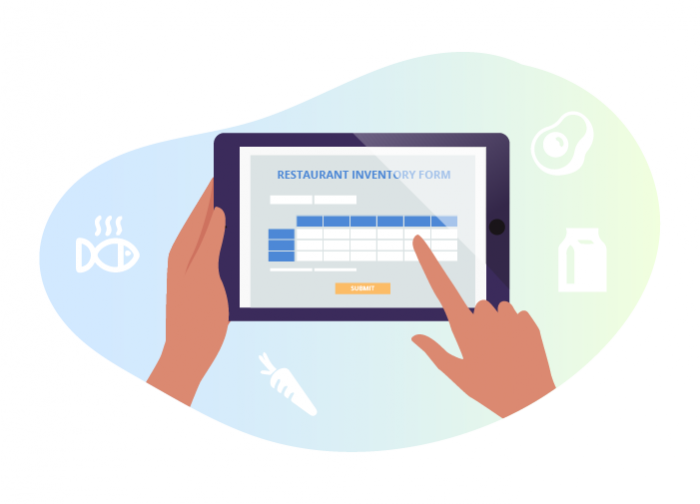
Why should you digitize inventory sheets?
Digital inventory forms let users add data electronically and send the information to backend restaurant management systems where it can be put to use automatically. Digital inventory sheets that integrate with your other software systems make it easier to manage purchasing and accounting, creating more visibility and requiring less data entry.
Digital sheets are also easier to customize and change based on your needs. You can more readily adjust them as your menu or inventory requirements shift over the course of the year. You won’t have to worry about frequent print jobs so your staff can keep up with data entry demands.
Optimize delivery scheduling
Obtaining goods and moving them into storage lays the groundwork for successful inventory management. If your team gets bulk orders right before dinner service and has to scramble to unload, then they’re probably going to take shortcuts. But if orders arrive way too early, you may find it difficult to get staff to arrive at that time of day to manage storage.
Analyze your typical work day and try to align delivery scheduling with your kitchen staff’s workflow. Ideally, they’ll have time to not only store items effectively but also take care of labeling, organizing shelves so older items are easier to access, and performing cleaning procedures in a timely fashion.
Inventory management is a complex task that touches many facets of the business. Being strategic about your decision-making and the strategies you employ can help you get ahead.
How to improve restaurant operations
Staying on top of everyday operations can put a strain on restaurant managers. The cycle of managing inventory, handling food prep, keeping up with customer demands, and cleaning up to prepare for the next day can be staggering. It’s easy to get so caught up in this cycle of work that developing strategies and making changes to improve restaurant operations feels impossible.
But operational inefficiency will inevitably damage your bottom line. It could also frustrate staff and make it more difficult to create positive customer experiences. Focusing on operational gains can help you create value from everyday tasks. The following are five key issues to keep in mind in the process of improving your restaurant’s operations:

1. Understanding and controlling operational expenses
Restaurant operating costs can add up quickly and be difficult to manage. Common costs include
- Staff salaries
- Utilities
- Cleaning supplies
- Food and beverages
- Equipment and facility maintenance
- Marketing
- Lease or mortgage costs
- Licensing costs (for music or other copyrighted material used in the establishment)
- Permits and/or taxes depending on local laws
This isn’t necessarily an exhaustive list of restaurant expenses, but it highlights just how varied and complex expense management can be. When it comes to managing restaurant costs effectively, it’s best to focus on a few key areas.
Gaining visibility
Tracking your costs efficiently makes it easier to stay on top of your spending. Doing so via digital channels allows you to create reports so you can visualize your costs based on different conditions. Working with key stakeholders, such as your chef or restaurant management, can help you get buy-in when you try to get costs under control.
Forecasting
Once you have visibility into your expenses, you can use that data to more accurately forecast your costs moving forward. You can use monthly data about salaries to project the costs for the hours each employee will work in the next month. This will help you assess whether you can actually afford the staff you’re keeping around.
Purchasing
Completing purchase orders is routine, but that doesn’t mean you can get casual about making purchases. Taking advantage of digital technologies to track purchase orders, taking note of vendor relationships, and optimizing each purchase relative to the costs and delivery timeline can go a long way in keeping expenses under control.
If you need one item that can be provided by two vendors, it’s important to assess which can meet your timing needs in the most cost-efficient way possible. Efficient restaurant purchasing is possible when you have visibility into purchasing history, software reporting on vendor performance, and a strong sense of what you can afford moving forward.
Performing calculations
All of the expense management strategies we’ve discussed aren’t really plausible unless you can accurately track your payments and calculate expenses. The good news is that you don’t have to do complex math to handle expense calculations. Instead, the challenge comes in the form of gathering accurate expense data so you can make precise calculations.
This is one of the reasons digital technologies are so valuable in today’s restaurant world. If you have a digital point-of-sale (POS) system, it can automatically log your transaction data. If you have a web-based inventory management and purchasing system, you can get complete visibility into supply chain costs. If you put your staff scheduling and payroll solutions into accounting software or a spreadsheet, you can calculate staffing costs fairly easily.
When you use these tools in conjunction with each other, you can fairly easily calculate your costs to inform your operating strategies. Once you have a clear idea of your restaurant’s operating expenses, you can identify pain points that are hurting your ability to generate profits and target them for improvements.
For example, imagine you’re at the end of your busy season and preparing for a few months of slow business. If you don’t have precise expense tracking in place, you’re left estimating what you can afford, something that can leave you with a cash flow problem as revenues dip. To avoid that, you could simply let go of most of your staff and reduce inventory. However, the time that you gain during the down season can be perfect for work on special projects, staff training, and menu development. If you let go of too much of your staff or cut down on spending for supplies, you limit your ability to capitalize on that opportunity.
If you have a clear sense of your historic expenses and revenue, you can use that information to better develop your operational strategies for the down season. With the right data, you can
- Look at staffing expenses historically, compare them to sales and revenue data in past down seasons, and identify how many staff members you can afford moving forward
- Explore how food storage and inventory management expenses shift during the down season so you can right-size your orders while still giving your culinary staff some freedom to experiment
- Project the costs of deep cleaning parts of your establishment based on current costs for cleaning supplies and staff compared to historic expense records for similar projects in past years
While many of these projections depend on historic data, you don’t always need years of information to pull from. Even being able to look back at a month or two of information can be valuable in turning observations into hard and fast conclusions based on real-world data. Over time, that information becomes more valuable because you’ll have access to information gathered over years.
Effective expense reporting and calculations pay operational dividends as you work to refine your business processes over time.

2. Improving customer service
If you’re working in the restaurant business, you know your customers are essential to your revenue. Successful restaurants rely on return business from loyal customers to stay in the black and grow over time. If you aren’t creating memorable, consistently positive customer interactions, you’ll eventually run out of people to serve and come to rely almost entirely on travelers who happen upon your restaurant.
While this kind of model may have been feasible in the past — sell a lot to tourists during busy travel seasons and use that revenue to carry you through the down times — it’s no longer feasible. Now that Yelp reviews are built into navigation systems and social media, restaurants can’t hide from bad word of mouth. Too many bad reviews mean that travelers using their phones to search for a restaurant will see the negative feedback and stay away.
Working hard to drive positive customer experiences is absolutely critical. And it isn’t easy. Some customer evaluations will inevitably be subjective. The vast majority of customers may love a dish, but one or two will leave bad reviews. Your waitstaff could be widely popular among patrons, but a few customers could have a negative experience for reasons outside the servers’ control. Mistakes happen, and different customers look for different things from restaurants. While you can’t prevent any sort of negative experience, you can put your restaurant in the best possible position for success. Here are some steps you can take to do this.
Getting customer feedback
The best way to understand how to create stronger customer experiences is to ask your patrons what they want. Feedback is a great way to understand what you’re doing well, what you need to work on, and whether or not customers are leaving your establishment happy.
Of course, surveys have been historically difficult to perform. Asking customers to fill out a sheet of paper on their way out of the restaurant — or sending it to them in the mail — results in fairly few responses. A small sample makes it difficult to figure out whether the feedback represents your operations as a whole or simply reflects an isolated incident. On top of all this, you don’t just need to collect the data; you also need to manually organize and analyze it.
Digital survey solutions make life easier. Digital forms, such as the survey forms we provide at JotForm, can go a long way in making data collection easier. You can use prebuilt templates or create your own options to get feedback from customers. Embed the form on your site, send it to patrons in your loyalty program, or email it along with receipts sent to patrons digitally. You can even use a tablet as part of the payment process and include the survey there.
Because digital surveys are so user friendly, customers are more likely to complete them. And the standardized responses you get from these surveys makes it easier to track the data via web apps and to view the results and analyze trends.
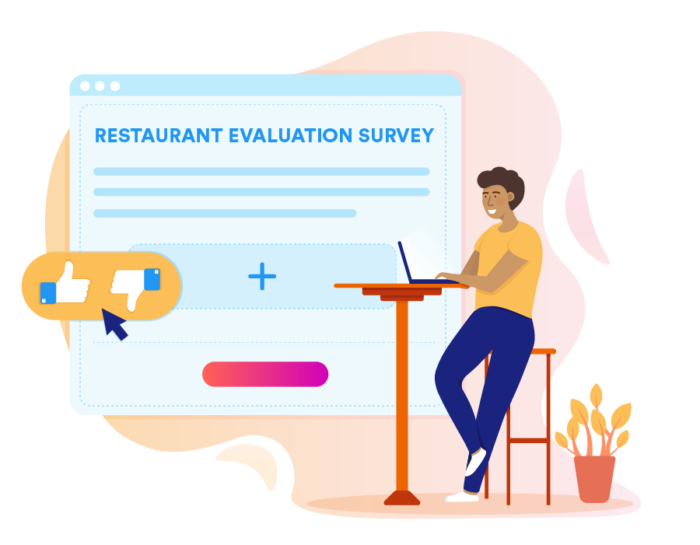
All told, digital surveys make it easier to collect and use customer feedback so you can make informed operational changes to fuel stronger experiences.
Training staff to escalate incidents
Negative incidents with customers can leave waitstaff scrambling to handle the conflict while keeping up with their other demands. Training staff in common methods to diffuse conflict and satisfy frustrated customers is a great first step in creating consistent positive interactions. Sometimes, though, nothing a server can do will change the customer’s behavior. In these cases, it’s important that your staff can identify early signs of a growing conflict and quickly escalate it so managers can step in.
Turning negative situations into positive or even neutral experiences can be valuable in retaining customers.
Handling online reviews with care
Negative feedback online can be tough to swallow, especially if it feels like a reviewer may have an agenda. However, responding aggressively or adversarially to reviews or social media posts will ultimately make you and your restaurant look bad. Work hard to avoid getting defensive. Instead, try to turn a negative review into an opportunity to recoup business by apologizing, trying to understand the customer’s complaint, and offering them an incentive to give your establishment a second chance.
Ensuring clear communication and expectation-setting
Few things fuel a negative experience more than customers expecting one thing and getting another. Make sure you use standard language to describe your dishes and ensure your staff knows what each item contains so they can answer customer questions accurately. It’s also important to make sure your servers understand how to communicate allergy concerns to kitchen teams and how to advise visitors on food safety issues.
Creating positive customer experiences is never easy, but it’s too important to push to the back burner.
3. Dealing with cleaning needs
Cleanliness isn’t just a matter of presentation. Yes, it’s essential that your seating areas and dining room are clean enough to make a good first impression and ensure customer comfort. But it’s also a major part of food safety.
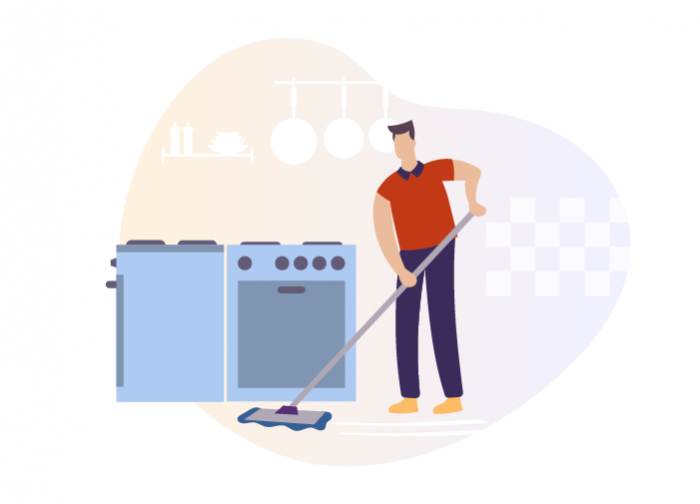
Though it’s critical, cleaning is thankfully fairly straightforward. Here are a few quick tips to keep in mind:
- Create a nightly routine clean-up process for your kitchen staff.
- Deep clean the kitchen weekly.
- Develop a quarterly or annual super deep clean for your kitchen that ensures you go above and beyond basic food safety requirements.
- Don’t neglect unseen places in your dining room — the undersides of chairs and tables, the tops of molding on walls, etc. — as these areas can collect dust, dirt, and bacteria that can cause problems or make your restaurant less comfortable.
- Wipe down the walls and ceilings, especially near tables, to clean up splatter and prevent dust from collecting on those surfaces.
- Ensure the exterior of your restaurant is clean as well. Pick up litter, perform basic landscaping if you don’t hire someone to do this for you, wipe down signs, and clean windows.
- Create a regular cleaning schedule for these dining room, entry, and outdoor tasks so that they aren’t forgotten.
- Make a custom restaurant cleaning checklist that your teams can use to make sure they don’t forget any cleaning tasks.
First impressions are powerful. A dirty, dingy restaurant can push customers away and create health risks. Even if you aren’t going for a high-end vibe in your establishment, don’t sacrifice cleanliness. There’s a difference between casual and dirty.
4. Deploying a modern POS system
We already mentioned that you can use modern POS systems to build surveys into customer checkout processes. But if you’re asking, “What is a POS system in a restaurant?” improved checkout capabilities are only the tip of the iceberg. A digital POS solution can transform how you operate, and it does so in a variety of ways, including
- Creating e-commerce-like checkout processes to give customers more payment options and make it easier for them to engage in loyalty programs
- Allowing for free flow of information between front-of-house and kitchen teams: Digital POS solutions can create alerts when a kitchen is out of menu items and automatically send orders to the kitchen, prioritizing them for your team
- Freeing your serving staff from manually writing orders, reducing human error and letting them focus more on customer interactions instead of clerical work
- Digitizing all orders and transactions to more easily track data over time for inventory, customer behavior, and financial reporting
In practice, a modern POS platform can transform your restaurant operations by solving many problems between the front-of-house and kitchen teams, creating visibility and easy communication. This pays dividends over time by fostering stronger customer experiences and creating greater visibility into everyday operations.
5. Handling online operations
Consumers have done more than just embrace online interactions with brands. They now want blended experiences where they can seamlessly move between physical and digital channels. Restaurants have an opportunity to engage customers through digital channels to better meet their needs. But to do this, you must get online operations right in these three key areas:
1. Reservations
Create a digital reservation form and add it to your website or mobile app. You can integrate this form with a digital POS solution to simplify booking management and make it easier for customers to reserve a table. Alternately, use the form for staff members so they can file a reservation easily.
JotForm’s restaurant reservation form can serve as a template that helps you schedule reservations in a convenient way while logging special requests. Our templates are customizable so you can adjust the form for your specific needs.
2. Take-out and delivery orders
Takeout is becoming a new normal for restaurants of all types — so much so that many traditional restaurants are getting into the prepared food business so customers can pop in and buy a dish to go. Accepting orders online, sending instructions to the kitchen, and giving customers a clear idea of when to expect the order to be ready is critical.
And takeout is only a starting point. Many restaurants are also partnering with delivery services to use outsourced drivers for deliveries.
This is an area where JotForm’s digital restaurant order forms can pay off, giving restaurants access to easy to customizable digital forms they can use to track customer orders and ensure positive take-out or delivery experiences.
3. Catering orders
Many restaurants maintain catering operations as a side gig, and the catering services often become profit centers that operate in parallel to the restaurant. Catering can be great for publicity and brand awareness, but it’s also complicated.
Digital technologies overcome longstanding barriers to efficient catering operations. Letting customers book your services online and empowering teams to manage catering schedules digitally makes everybody’s life easier.
Whether you’re planning for a big event or preparing a few platters for pickup, an online form that handles orders and simplifies scheduling is invaluable. JotForm’s custom catering order forms let you set up fields for the catering products you offer, making it easier for customers to schedule services and simplifying backend management for your team.
Whether customers interact with you online or are regular visitors to your establishment, improving operations to better meet their needs is critical to the long-term success of your restaurant. Great food may get you off the ground, but positive experiences bring customers back over and over again. Using digital technologies and focusing on operational best practices can position you to not only put your restaurant on a path to success but also sustain growth over time. To get there, however, you also need to get your staff on board.
Training and staff management
Staff can be one of a restaurant owner’s biggest assets. A great chef can help you stand out in the marketplace. Efficient line cooks can keep the kitchen humming efficiently. Front-of-house workers can forge strong customer interactions and smooth over any rough customer experiences. Managers can help you stay on top of finances and keep your establishment running smoothly.
If your restaurant staff is happy and productive, then you’re probably going to end up in a good place. If they’re unhappy and quitting on you, then you’re going to struggle to maintain consistency in your products and services.
When thinking about how to manage restaurant staff, it’s important to look beyond the basics and consider the role your staff can play in creating value for your business. Ultimately, an engaged, skilled staff can help you advance your business.

What kind of staff do most restaurants need?
Restaurant staffing demands will vary substantially depending on the size of your establishment and customer base. However, there are a few roles that just about every restaurant needs to fill:
- Head chef: manages kitchen staff, takes the lead on menu choices, and is responsible for quality and consistency during food prep
- Line cooks/sous chefs: provide support to the head chef, possibly taking ownership of specialty roles in the kitchen
- Pastry chef: prepares desserts and consults with chef on dessert-related menu items; is rarely a dedicated staff member in smaller restaurants
- Expediter: manages orders coming into the kitchen, organizes food prep, and serves as an interface between the front and back of the house; often part of head chef responsibilities in small establishments
- Bartender: provides bar service and, in some cases, is responsible for purchasing and inventory management behind the bar
- Dishwasher: washes dishes and handles odd jobs in the kitchen
- Bussers: clear tables and provide basic cleaning in the front of the house
- Waitstaff: take orders, serve food, and function as the primary customer-facing contact for patrons
- Host/hostess: welcomes guests, shows them to their tables, and manages reservations
- Floor manager/maitre D’: manages the front-of-house staff and oversees customer-facing interactions
This is a (by no means exhaustive) peek at a typical restaurant’s staff, but it only scratches the surface of what’s possible. These are the essential roles in a restaurant. Many establishments will also have bookkeepers, accountants, decorators, purchasing specialists, or professionals in similar roles.
The key here isn’t so much that you need all of these roles but that a restaurant relies on a lot of people working together and working really hard to stay on top of everyday tasks. If you don’t invest in your staff, things can fall apart quickly. It’s important to be strategic about hiring and retaining workers so your human resources processes align with your operational needs.
How should restaurants handle typical HR tasks?
Hiring, staff retention, training, engagement, and termination are critical HR tasks that can sometimes slip under the radar in restaurants. Here are some tips to help you handle these complex processes.
Useful software for HR tasks: HR software for small business
Hiring
Expand your candidate pool
Restaurant staff hiring is harder than it may seem. Working in a restaurant requires social and relational skills that are difficult to measure. Waitstaff need to be willing to serve with a smile, even when faced with unfriendly guests. Managers need to deal with complex scheduling and oversee roles that often face high turnover. When it comes to kitchen staff, the phrase, “If you can’t stand the heat, get out of the kitchen,” is a cliche for a reason. Not everybody can handle the stress of working in a restaurant kitchen.
Posting a job ad on your website and in the local newspaper isn’t enough. By expanding your reach to more candidates, you can interview a wider range of prospects, and you’ll be more likely to find individuals with high potential. Here are a few strategies to consider:
- Use online job boards to help prospects find you.
- Network, network, and network some more. Go to job fairs, get involved in community groups, and develop relationships with caterers or food-service businesses in your area. They may be able to suggest candidates looking for more work than they can offer.
- Connect with local or regional culinary institutes — many community colleges have culinary arts programs — to identify promising chefs looking to get started as sous chefs or line cooks.
- Leverage social media to get the word out about job opportunities.
Widening your hiring net will expose you to more promising candidates for a variety of roles in your restaurant.
Don’t neglect job descriptions
A good job description will help a candidate understand your job while showcasing why your establishment is a great place to work. Take the time to refine your job description. If you put a positive spin on your opportunity, this can go a long way in attracting candidates. Formulating the job post isn’t just a throw-away task; it’s a key marketing tactic.
Standardize your restaurant staff hiring processes
Staff-related issues open restaurants up to accusations of discrimination. There’s no way to sugar coat this. If a candidate thinks you didn’t provide a fair chance for a job due to discrimination, you can face accusations of wrongdoing and potential investigations.
One of the best ways to avoid these kinds of problems is to standardize your processes so that, as much as possible, every job candidate for a certain role has the same experience. Things to standardize include
- What the interview process looks like. A phone screening followed by an in-person interview involving direct supervisors is a common tactic. For roles with specialty skills, some sort of skills assessment is often appropriate.
- Who is involved in interviews. If your floor manager takes the vast majority of your waitstaff interviews, but the restaurant owner steps in occasionally without clearly justifiable reasons, it could make candidates who hear about other applicants’ experiences uncomfortable.
- The information you require. Getting a resume, cover letter, references, and similar materials from candidates is normal. But asking for different things from prospects for the same role can look bad. Standardize what information you’ll need and make those requirements clear from the start.
- Applications. Create digital applications for different job roles to make life easier for your team and applicants alike. JotForm provides a variety of job application templates to help you get started.
This may sound overly rigid, but sites like Glassdoor don’t just review what it’s like to work with companies; they also give individuals the opportunity to share their experience applying for jobs with businesses. If candidates feel mistreated, they may share that with others. If you ask something unusual from them, other candidates may find out about that when reading about others’ experiences.
Standardization protects you while making restaurant staff hiring a bit easier because processes are defined and you’ll get roughly the same information from all applicants.
Retention, engagement, and training
These three issues are deeply linked.
Retaining skilled workers helps you create a stable, productive, and efficient operational climate for your restaurant. It’s easier to provide consistent service and grow your business when you aren’t fighting against constant turnover.
You can’t retain workers if they aren’t engaged. Employees who are engaged in their work tend to feel that what they do has a purpose and are therefore more motivated to strive for excellence each day.
Restaurant staff training is the glue holding retainment and engagement strategies together. By investing in your staff, you can help them grow their skills, move into more fulfilling job roles, envision a long-term place in your business, and feel valued in their work.
Retainment, engagement, and training are highly complex issues, and best practices often vary based on your specific restaurant and business model. That said, here are some tips to help you start thinking about your staffing opportunities:
- Today’s employees, particularly millennials, value work that they consider meaningful. Help them feel connected to the success of your business, and they’ll be more likely to see purpose in their work.
- A worker leaving your company isn’t necessarily a bad thing. Many individuals stay at roles for just a few years as they constantly look for new lifestyle and career opportunities. Take time to understand why employees leave so you can adjust your retainment strategies accordingly.
- Relationships are integral to happiness in the workplace. Take time to listen to your staff, give them a voice in the decision-making process, and value them as people, not just workers. This can build trust and reinforce the idea that you value your staff. This doesn’t mean sacrificing authority; it means creating a culture of transparency and respect across your establishment.
- Create clear pathways for career growth. Even if it means sometimes losing a skilled worker to a good job elsewhere, focusing on skills growth toward higher-level restaurant positions can help employees envision a long-term career in the industry.
- Use slow times of year to focus on training and development. Restaurants often experience seasonal peaks and valleys. Take advantage of slow times to help your staff grow.
Helping develop employees can go a long way in keeping them happy and productive. But sometimes, a worker simply isn’t a fit for your restaurant. Termination is never easy, but it’s sometimes necessary.
Termination
Our advice here is similar to what we highlighted in hiring: Standardize your processes, and clearly communicate expectations to protect yourself against legal problems. Set clear and firm policies for
- Probationary processes. When employees are underperforming, many businesses put them in a probationary phase where managers create improvement plans, communicate them to the employee in question, and make clear that failing to improve could lead to termination. This helps staff understand that termination could be on the horizon and gives them clear reasons why their jobs are at risk.
- Severance. Clear guidelines about severance benefits help employees understand what to expect when they are fired.
- Fireable offenses. Some behavior can be considered justification for immediate termination. Some of these behaviors, like theft, are obvious and easy to create policies around. Others, such as willfully neglecting work tasks, leave room for interpretation. Clearly define behaviors that will lead to immediate termination, making sure employees understand them and providing practical examples to avoid confusion.
Termination is always a difficult process, but standardization and clear communication make it more manageable.
How do you build scheduling?
Restaurant staff scheduling is often complex, as employees often need to spread work over varied shifts based on their availability. Digitizing your restaurant scheduling process can make life much easier. You can use digital tools to
- Keep employee details in one place for easy analysis
- Document worker skills to avoid competency gaps on certain shifts
- Record employee availability so you can more easily optimize schedules
- Flag potential conflicts and track hours automatically based on data in the system
Dedicated scheduling apps make all of this easier, saving you from excessive manual data entry as you work to craft schedules that align with your needs.
Conclusion
Achieving management excellence in a digital world
Restaurants must provide excellent food and service to stand out in a crowded market. Your ability to manage your establishment and keep staff happy is a key part of this process. As digital technologies become mainstream in the sector, you have new opportunities to leverage data and get ahead of your competitors.
Whether you’re seeking custom forms or advice on how digital documentation and records can help you run your restaurant better, JotForm would be happy to help. We pride ourselves on making digital documentation easy through customizable form templates that help you get the information you need to run your restaurant and keep it organized. Contact us today to learn more.
